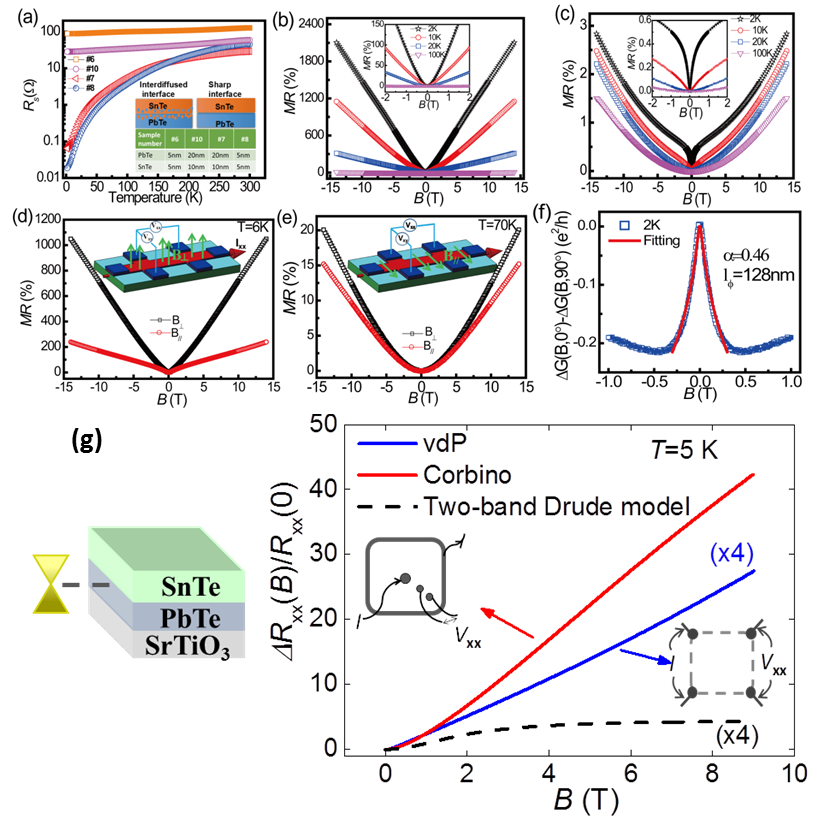Linear magneto-resistance (LMR) is a novel magneto-resistance behavior, which has important application significance in developing new generation magneto-resistance devices.
Topological crystalline insulator (TCI) is a new type of topological materials whose metallic topological surface states (TSSs) are protected by the crystalline mirror symmetry, not by the time reversal symmetry as in topological insulators. With the lattice symmetry protection, it is easier to modulate the structural factors to achieve the regulation of the topological surface states and further the surface transport.
If the LMR could be realized in TCI films and its topological surface states could be modulated by crystalline lattice symmetry, it will be of great significance not only for the application of topological crystal insulators in spintronics devices, but also for theoretical study of transport mechanism of topological crystalline insulators.
Recently, Prof. ZHANG Zhidong and Prof. MA Song from the Department of Functional Materials and Devices of Shenyang National Lab for Materials Science, Institute of Metal Research, Chinese Academy of Sciences (IMR, CAS), fabricated a new PbTe/SnTe heterostructure by constructing the band insulator PbTe and TCI SnTe on SrTiO3(111) substrate, collaborating with Prof. Xuan P. A. Gao from Case Western Reserve University.
The giant linear magneto-resistance with value 2150% was observed at 2K and 14T and the strong metallic conduction likely induced by Dirac fermions with high mobility was also discovered.
By diffusion of Pb atoms into SnTe layer on the interface of PbTe/SnTe heterostructure, the cubic-rhombohedral structural phase transition in SnTe is induced and its crystalline symmetry is subsequently broken, which transforms LMR to the typical weak antilocalization.
Furthermore, the LMR in PbTe/SnTe heterostructure was measured by Van de Pauw geometry and confirmed by Corbino geometry. The multiple-carrier transport in PbTe/SnTe heterostructure was detected in which the surface state Dirac electrons dominated the strong metallic conduction at low temperature and the bulk holes dominated the weak metallic conduction at room temperature.
It is also found that the present LMR in PbTe/SnTe heterosturcture cannot be well described by the classical Drude model, which highlights an unusual magneto-transport character of topological materials that challenges the standard Drude picture of electron transport.
The works have been published on Physical Review B (Rapid Communications) and Nano Letters, respectively.

Figure. (a)-(f) Two types of temperature and magnetic- field dependent transport in PbTe/SnTe. (g) The two-band Drude model is not sufficient to self-consistently describe the longitudinal magneto-resistance. The insets present the schematic of the van der Pauw and Corbino measurement geometry (Image by IMR)